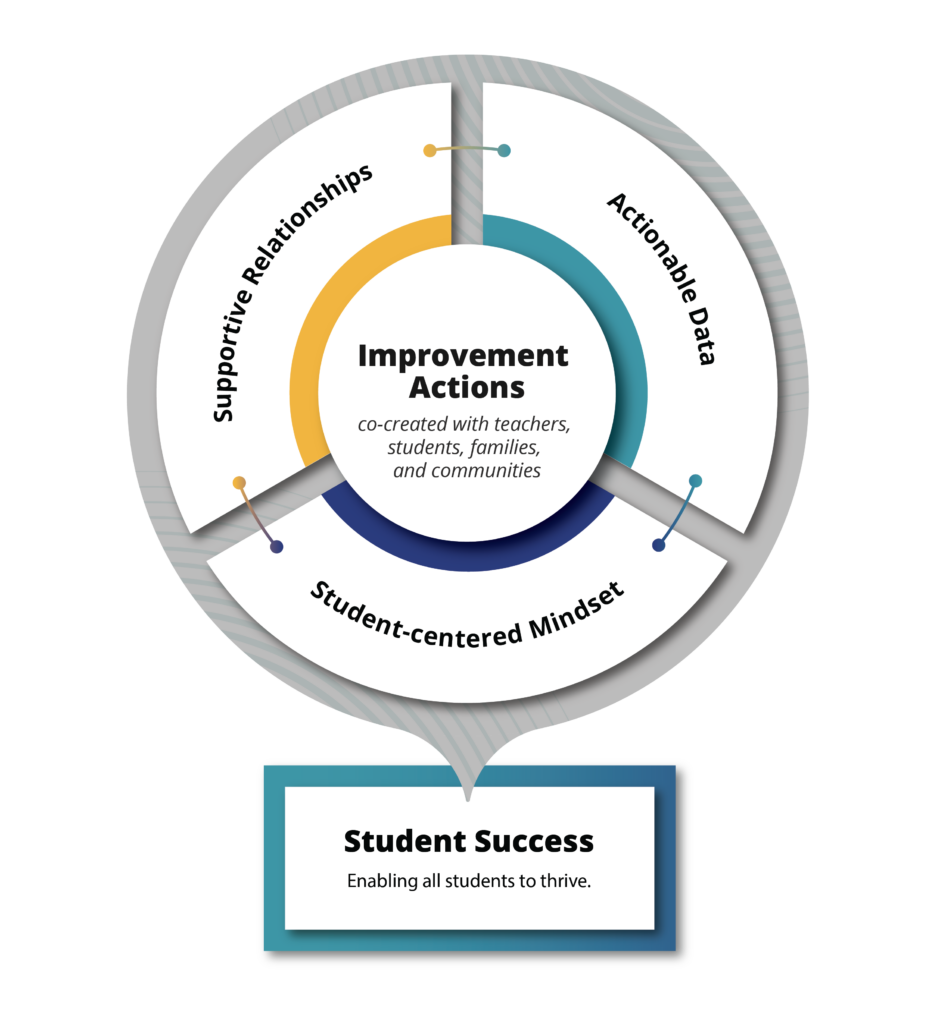September 4, 2025
by Terrence Kneisel, Abby Marcantonio, and Emily Pallin (cross-posted from RISE Network)
For students, the first day of school is rarely just another day. It’s the culmination of a summer filled with emotions — anticipation, uncertainty, hope. Students walk through school doors wondering: “Will I succeed here — not just academically, but socially, emotionally, and in preparing for my future?”
That mix of anticipation and anxiety isn’t just for students. Educators are setting up classrooms, planning lessons, and juggling a thousand details – all while trying to preserve a sense of purpose. The pressure to get everything “just right” for the first day can feel overwhelming.
At the RISE Network, we work with schools that are deeply committed to creating a welcoming, affirming space for students that supports their success, not just on day one, but throughout the year. That starts by designing systems that center student success, equity, and belonging from the very beginning. We also believe in starting strong while pacing ourselves for long-term impact. Each year brings new opportunities to apply hard-earned insights, reconnect with students and colleagues, and center the systems and strategies that will help students thrive.
The GRAD Partnership, of which RISE is a proud member, offers a clear and compelling lens for back-to-school planning through the student success systems framework – especially when paired with RISE’s own “Schools on the RISE” framework. Both emphasize the power of data, collaboration, and equity-centered systems to help students transition to, through, and beyond high school.
Together, they offer a valuable roadmap for ensuring this school year starts strong and sustains momentum. We know that building student success systems isn’t about one program or initiative. It’s about coordinated, collaborative work across classrooms, teams, and departments to ensure that every student is on track for high school and postsecondary success.


So what does that look like in practice? Below, we’ve outlined six key focus areas from the Schools on the RISE framework to guide back-to-school planning. Whether you’re leading a team, advising students, or supporting school-wide systems, consider which of these areas you’re most eager to prioritize in the months ahead.
Prioritized Goals:
- Elevate a handful of goals. If everything is a priority, then nothing will receive the attention it deserves.
- Socialize goals with students, families, educators, and partners. Ensure all stakeholders have a shared understanding of and investment in the goals.
- Post the goals and progress toward school goals in visible and celebratory ways around the school building.
Improvement Teams and Mindsets:
- Take time to reconnect as teammates pursuing shared student outcome goals. Share summer highlights, reconnect as colleagues, and invest in adult relationships.
- Determine when teams of educators will meet together and ensure that collaborative time is sacred and protected within the master schedule.
- Discuss and commit to shared norms, including ways the adults want to work together in service of students.
- Establish a clear meeting schedule where — similar to the scope and sequence for course curricula — upcoming meetings have a clear set of topics and goals. This makes meeting planning a whole lot easier!
Actionable Data:
- Revisit year-end data from the prior year so that educators have a clear understanding of priorities for improvement.
- Commit to shared practices for data entry to ensure that grades, attendance, etc. provide an accurate picture of how students are experiencing school.
- Ensure students and families know how to access data and, most importantly, what the data are telling them. Consider scheduling student conferences as a means to engage students in Quarter 1 goal-setting conversations.
Aligned Systems and Resources:
- Engage in strategic editing! We often add new programs, interventions, and initiatives without sunsetting programs that have run their course. Be intentional about doing a manageable set of these well and in an aligned way.
- Create a master calendar of events and activities for the first marking period, at least. Have a clear line of sight around major events and milestones during the first few months of the year.
- Communicate key policies to students and families (e.g., attendance seat time requirements, promotion thresholds) to establish the reasons for the policies, available resources and supports, and the implications of not meeting policies.
Student and Community Engagement:
- Send initial communication home to families (in multiple modes and languages), welcoming families to the school year, sharing key announcements (e.g., on-track definition, postsecondary planning activities), and reminding families of available resources and support. Back-to-school surveys of students and families (particularly for those enrolling in the high school) can gather valuable data for ongoing collaboration.
- Reach out to caregivers during the first month of the school year with good news! This can be a quick text or postcard.
- Meet with community partners — ideally in one shared setting — to get clear on goals, partner programming, students served, etc., and encourage partners to work among themselves to create an integrated support system for students and families.
Distributed Leadership:
- Be clear about roles and responsibilities for team collaboration and meetings (e.g., Who is responsible for developing the agenda? Recording notes and next steps?).
- Establish team leads for major activities during the first marking period, ensuring that no one team member is overloaded during specific times of the year.